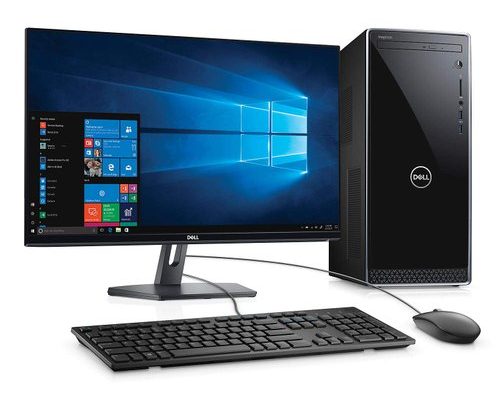Windows 10 Automatic repair loop, as important as it might be for resolving difficulties when it can’t, can become stuck, making it impossible to boot into Windows 10. If you’ve encountered the Windows 10 automatic repair loop, here are some solutions that may help you get your pc back up and working.
What Is Windows 10 Automatic Repair Loop?
Windows 10 features a variety of troubleshooting and repair tools that make troubleshooting and repairing common Windows issues much more accessible than in previous versions of the operating system. Startup Repair is one of those programs that can help you fix problems with your Windows startup. For example, if an issue with a driver, service, or file is causing difficulty when booting your PC, Startup Repair should fix it.
However, it can’t always fix the problem, which can put you in an automated repair cycle in which Windows can’t boot because of the problem, but when it tries, all it can do is perform startup repair again and over.
This loop can appear as a black screen with the message Preparing Automatic Repair or Diagnosing Your PC. You may also see the Preparing Automatic Repair text on a blue screen, or the Startup Repair operation may complete. Still, you are informed that Automatic Repair could not repair your pc. You can resume at that moment, but you’ll be returned to the automatic repair loop. You will also see a button for Advanced Options, which may provide you with more options to assist you in resolving the issue, which we will discuss further below.
What Causes Windows 10 Automatic Repair Loop?
The repair loop is caused by Startup Repair failing to resolve the Windows startup issue. A botched Windows update deteriorated hardware such as memory or a hard drive or resulted in missing or corrupted system files tainted by malware. This issue could be caused by a driver issue for a specific piece of hardware or a registry error.
Identifying the source of the automatic repair loop is difficult before attempting to resolve it. Therefore, the best method to get past the Preparing Automatic Repair page is to experiment with different solutions and discover what works.
How to Fix Windows 10 Automatic Repair Loop
Here are various potential solutions to the repair loop fault you’ve encountered. After attempting each one, restart your pc to see if the fix was successful.
(1). Verify that you are booting to the correct drive
Although doubtful, this remedy is so quick and straightforward that it’s worth a shot. Your pc may be attempting to boot from the wrong industry. To check and change it back to the correct one, open your PC’s boot menu and pick the C: drive.
(2). Start in Safe Mode
A safe Mode is a diagnostic tool. However, it may attempt to load this basic Windows version, which resolves your startup fault, and the repair loop will no longer be triggered here.
(3). Run the commands Fixboot
Chkdsk. Fixboot and Chkdsk are two orders worth trying to pull you out of the automatic repair cycle. They can detect and repair issues in your hard disc and Windows boot directory. Although you can run them from the Command Prompt in Windows, you must execute them through the Advanced Startup Options because automatic repair cannot repair your PC.
(4). Disable antimalware protection at startup
It’s rarely a good idea to disable your antimalware software, as it’s essential to keeping you and your data safe. However, if your pc no longer boots and you’re getting a repair loop error, turning off early startup antimalware protection can assist.
To do so, navigate the StartupSettings menu and disable it by pressing the corresponding number key.
(5). Start Startup Repair from a USB/DVD drive
There’s always the possibility that your Startup Repair function isn’t working, but your pc is. You can avoid this by executing Startup Repair from the Windows installation disc you used in the first place.
Depending on what you used, this can be a DVD or USB drive—or you can create one from a separate PC if your system arrived with Windows pre-installed.
(6). Turn off System Repair
As valuable as System Repair is, if it’s the source of your problem, disabling it—at least until you can fix it—might be the best option to get back to Windows. First, open the Command Prompt as you did with the startup Advanced Options, then use the input commands (in the guide listed above) to disable System Repair.
(7). Run a System Restore
Jumping back to when your PC worked is one of the simplest ways to cure all issues, including when the automatic repair was unable to repair your PC.
(8). Restart your pc
Resetting your Windows 10 installation is a more dramatic option to resolve the Windows 10 startup repair loop. It effectively reinstalls Windows while retaining all of your files, folders, and settings—you will, however, need to reinstall your applications.
(9). Install Windows again
If all other software options have been explored, reinstalling Windows from scratch may be the best method to fix a Windows 10 startup repair problem.
It is a good tip to backup any data and folders before performing a fresh install, as doing so deletes everything on your boot drive.
(10). Change your hard disc
You may have a faulty or deteriorated hard disc. Replacing and reinstalling Windows from scratch may be the best method to resolve a startup repair error and prevent it from recurring. Make a backup of data before proceeding.
(11). Memory
It would help if you replaced your memory. Memory disorders are challenging to identify, but they can lead to various concerns.
Although you should first try switching the slots your existing memory is in and running with only one stick in (try both separately), you can also replace your memory to see if that gets your PC working again.
ALSO SEE: Windows




